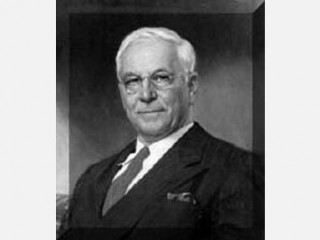
Arnold Gesell biography
Date of birth : 1880-06-21
Date of death : 1961-05-29
Birthplace : Alma, Wisconsin
Nationality : American
Category : Science and Technology
Last modified : 2010-12-18
Credited as : Psychologist, and pediatrician, investigation of child development
Arnold Lucius Gesell was an American psychologist and pediatrician whose pioneering research on the process of human development from birth through adolescence made a lasting mark on the scientific investigation of child development.
Arnold Lucius Gesell was born on June 21, 1880, in Alma, Wisconsin. His parents highly valued education, and early in his life, Gesell decided he wanted to become a teacher. He graduated from the University of Wisconsin in 1903 and then became a high school teacher and principal before entering graduate school at Clark University, where he received a Ph.D. degree in 1906. Gesell believed that in order to do research in child development, he also needed medical knowledge, so he studied medicine at Yale, receiving an M.D. in 1915. Early in his career he taught psychology and child hygiene at the Los Angeles State Normal School.
Gesell joined the faculty at Yale as assistant professor of education in 1911 and established and directed the Yale Clinic of Child Development from 1911 to 1948. The Yale Clinic became the focal United States center for the study of child behavior in its time. From 1948 until his death, Gesell served as director of the famous Gesell Institute of Child Development in New Haven, Connecticut, which continued the work begun in the Yale Clinic. Gesell died in New Haven on May 29, 1961.
Gesell was one of the first to attempt a quantitative study of child development. Louise Bates Ames, one of his co-workers, described his work as "painstaking" and "controlled." Developing his own methods of observation and measurement, Gesell had children, including infants, of different ages respond to different stimulus objects such as cubes and pellets and bells while he observed their behavior and responses. After 1926 he used the motion picture camera as the main means of observing children, filming about 12,000 children.
Gesell's initial work focussed on retarded children, but he believed that it was necessary to understand normal infant and child development in order to understand nonnormality. He also studied Down's syndrome, cretinism, and cerebral palsy.
Gesell's pioneer work on infant mental development led him to conclude that the mental development of children appears to follow certain regularities comparable to the kind of regularities in physical development. He documented patterns and similarities in children's mental development and claimed that individuals go through an identifiable sequence of stages. Gesell's work is often cited as supporting a belief in predetermined natural stages of mental development in the later heated controversy over nature versus nurture in educational readiness.
Some of the data Gesell obtained were integrated into schedules which could be used to calculate the Gesell Development Quotient, or DQ. For a while the DQ was widely used as a measure of the intelligence of young children.
Later researchers raised questions about some of Gesell's findings. The DQ is no longer used, and some say Gesell's conclusions were based on a limited number of cases and a restricted sample of all white, middle-class children in one New England city. Others believe he made too little allowance for individual variations in growth and for cultural influences on child behavior.
There is no question, however, about Gesell's pervasive influence on American psychology and education and on child-rearing practices. Gesell sometimes spoke directly to parents, advocating "discerning guidance" rather than
rigidity with rules or, on the other hand, over-permissiveness. He also considered questions such as the psychological factors in adoption and the effect of premature birth on mental development. His books gave norms for behavior at successive stages of development. Three books widely read by parents in the 1940s and 1950s were: Infant and Child in the Culture of Today (with Francis L. Ilg, 1940), The Child from Five to Ten (with Frances L. Ilg, 1946), and Youth: The Years from Ten to Sixteen (with Frances L. Ilg and Louise Bates Ames, 1956).
Among the many books that Gesell wrote are: Guidance of Mental Growth in Infant and Child (1930), How a Baby Grows (1945), and Studies in Child Development (1948).
Gesell is listed in Webster's American Biographies (1979). Irvine provides a brief biographical sketch of Gesell in "Pioneers in Special Education," in Journal of Special Education (Winter 1971). The International Encyclopedia of the Social Sciences (1968) gives insight into his work and life.
Ames, Louise Bates, Arnold Gesell: themes of his work, New York, N.Y.: Human Sciences Press, 1989.
















